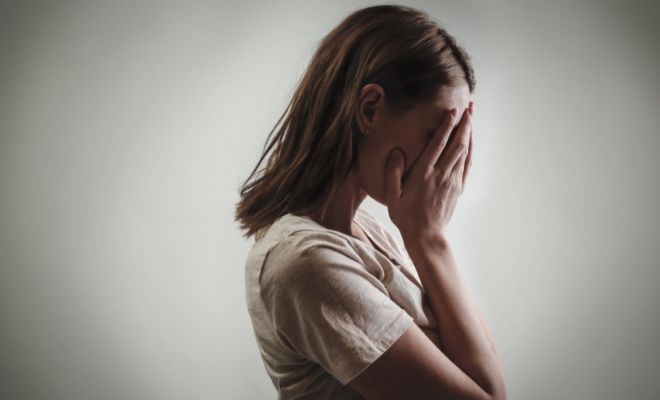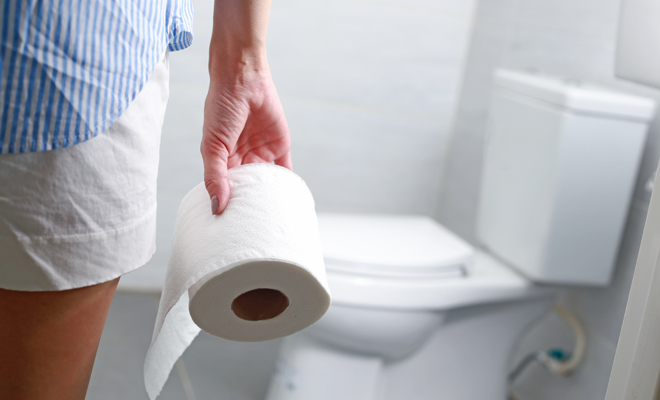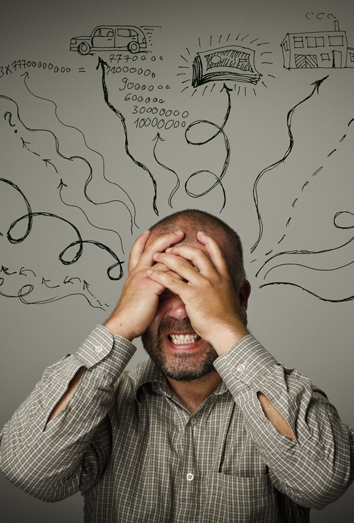Anxiety disorders are a problem suffered by more than 260 million people worldwide, as indicated by the World Health Organization (WHO). Furthermore, these figures could have increased significantly with the advent of the coronavirus pandemic.

This is suggested by a study by Sylvan and Quires (2020), cited in the report “Mental health and COVID-19 A year of pandemic”, prepared by the Spanish Mental Health Confederation. It explains that, during the months of the pandemic, the prevalence of anxiety has been 33% in the population and, in addition, one of the main risk factors for anxiety (and depression) is being a woman.
In this article we will talk about one of the faces of anxiety: anxiety attacks or panic attacks. But what really is an anxiety attack? And a panic disorder? Why do some people tend to be more anxious than others? How many anxiety attacks can you give in a day?
We will answer all these questions and, in addition, we will talk about how this type of problem is addressed in therapy.
What is an anxiety attack?
An anxiety attack, also called an anxiety attack or panic attack, is defined in the DSM-5 (Diagnostic and Statistical Manual of Mental Disorders, APA 2013) as the sudden appearance of fear or intense discomfort that reaches its maximum expression in minutes symptoms occur :
– Palpitations, pounding of the heart or rapid heart rate.
– Sweating.
– Trembling or shaking.
– Feeling of difficulty breathing or suffocation.
– Sensation of suffocation.
– Pain or discomfort in the chest.
– Nausea or abdominal discomfort.
– Feeling dizzy, unsteady, light-headed or faint.
– Chills or feeling of heat.
– Parenthesis.
– DE realization or depersonalization .
– Fear of losing control or “going crazy”.
– Afraid to die.
This sudden onset of intense fear or discomfort can appear in a calm state or from an anxious state.
The anxiety attacks that you can experience in a day
Actually, there are no 100% valid answers to this question. The truth is that the number of anxiety attacks that can appear in a day cannot be determined, because, in severe cases of panic disorder with agoraphobia, for example, multiple of them can appear.
There is no rule that says that there is a maximum number of attacks that can appear in a day, because, technically, as many as the body can withstand can appear. Of course, logically, the more serious the disorder, the greater number of disorders can appear in one day, although it is normal for them to occur on a weekly basis and not so much on a daily basis.
Testimonials are known, such as that of Nancy, a woman with severe panic disorder with agoraphobia, who states that she suffered up to 25 anxiety attacks a day, although this is by no means the norm. As she explains it in an interview with InfoBase: “I didn’t have a panic attack from time to time. They were like contractions before a birth: one would end and while I was trying to recover, the other would begin. In each one I felt like I was having a heart attack. And I had at least 25 panic attacks a day.”
In panic disorder, for example, according to the DSM-5, in order to diagnose the disorder, 2 or more panic attacks must appear (generally, not per day), these being unforeseen. In addition, at least one of these attacks is followed by a feeling of restlessness or ongoing worry about other panic attacks or their consequences.
Why do anxiety attacks (or anxiety) appear?
There are different explanatory models for anxiety and anxiety disorders, such as panic disorder. Some suggest that there are people who show a certain predisposition to this type of disorder. In fact, there is enough evidence to think that hereditary could play an important role in anxiety disorders.
In this sense, studies indicate that around 34% of monozygotic twins (vs. 17% of dizygotic twins) show concordance in anxiety disorders in general.
Other hypotheses, in this case neurobiological, speak of alterations in GABA (gamma-amino-butyric acid); a substance that inhibits the excitability of neurons, so anxiety could appear due to the ineffectiveness of this neurotransmitter. A possible increase in noradrenergic (noradrenaline) function in the brain, and an over activity of serotonin, in people with anxiety is also postulated.
Finally, learning theories speak of the acquisition of certain behaviors in anxiety, that is, they include the environment and experiences as causal factors of anxiety disorders.
How to reduce anxiety attacks?
To reduce anxiety attacks, it will be convenient to identify the causes of these attacks, as well as the causes of that basic anxiety that is directing our lives. Thus, the most important thing will be to find out what is causing these attacks and how we can address it from psychotherapy.
In general, for anxiety, cognitive strategies (for example, cognitive restructuring) and behavioral deactivation (relaxation techniques, breathing, mindfulness, visualization, etc.) are usually used.
For anxiety attacks in particular, interceptive exposure techniques are widely used, which involve exposure to the physiological signs or symptoms of those attacks (and those symptoms occur voluntarily, so that the patient learns to expose themselves to them, to face them and tolerate them without causing them to lose control).
Validated psychological treatments
On the other hand, there are empirically validated treatments for panic disorder, characterized by the appearance of recurrent anxiety attacks. Multicomponent cognitive-behavioral programs are very effective for panic disorder and agoraphobia. These include cognitive and behavioral techniques, as the name suggests.
Breathing training is also used for anxiety attacks and panic disorder in general, although, according to the Vallejo (2016) manual, its efficacy as an isolated intervention for the treatment of this disorder has been questioned.
For its part, the Guide to Effective Psychological Treatments proposes applied relaxation as a probably effective treatment for anxiety attacks, as well as live exposure therapy (exposing oneself directly to attacks). Finally, exposure through virtual reality is a novel modality to address this disorder; although its effectiveness has not yet been 100% proven (it is still in the experimental phase, according to the Guide by M. Pérez).
Pharmacotherapy
Anxiolytic drugs are used. Both have a shorter duration of long-term efficacy compared to psychological treatments.
Thus, drugs can be useful in the short term (and, above all, they are useful to reduce anxiety and start working with the person), but to achieve true and profound changes, psychotherapy is essential.
Although in itself, suffering an anxiety attack is not dangerous (despite the fact that, when we suffer it, we may have the feeling that “we are dying”), the truth is that suffering them generates a lot of anguish and discomfort.
In addition, it wears out a lot physically and mentally and, on the other hand, the “fear of fear” (or anxious apprehension) can arise, which implies the fear of suffering an anxiety attack again in the future.
To avoid getting into these loops and making the disorder chronic, we encourage you to ask if you feel that this is happening to you and that you need it. Remember that you are not alone!






